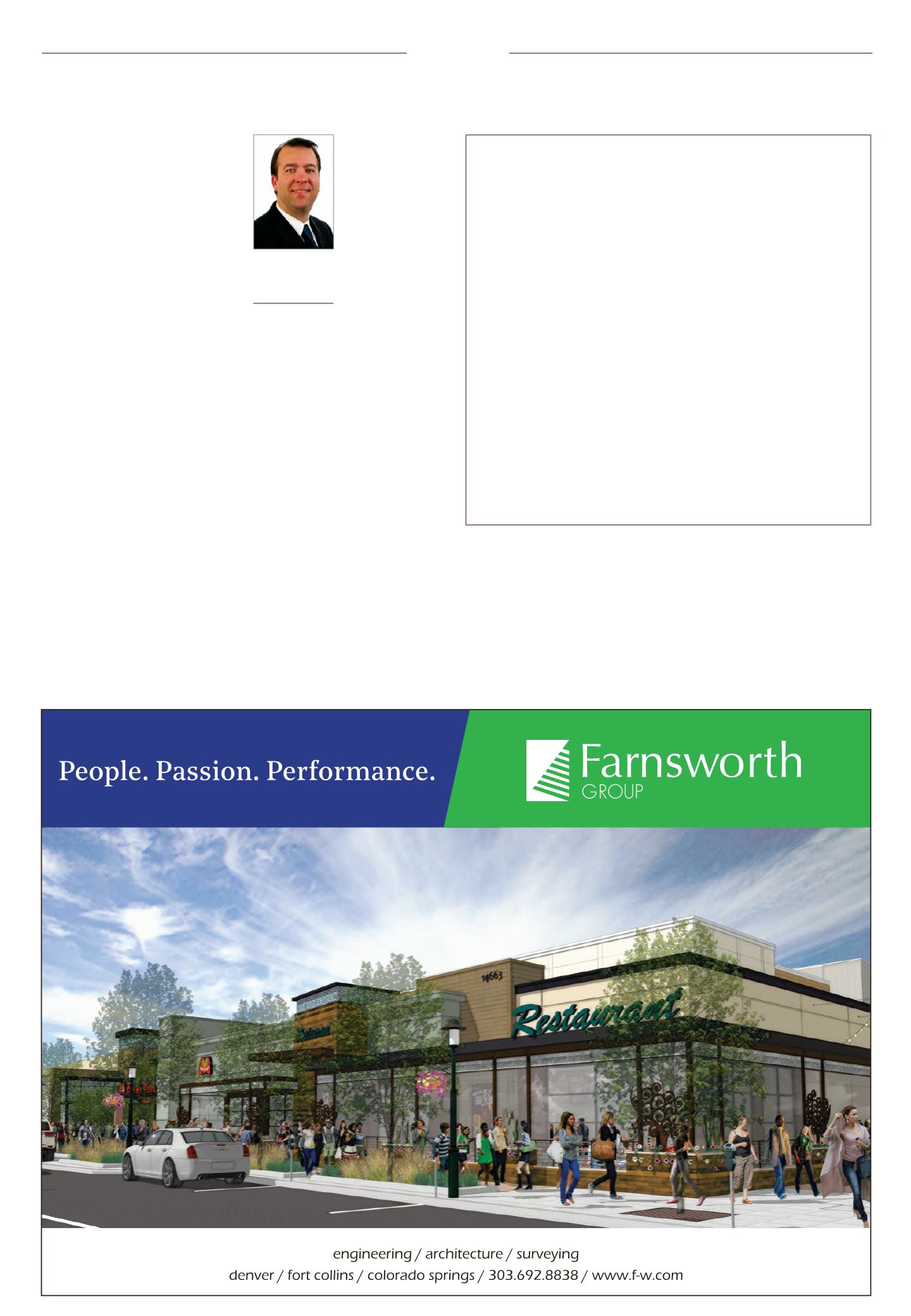

Page 10
— Retail Properties Quarterly — November 2017
www.crej.comDenise Leal | 303.692.8838
|dleal@f-w.com1/2 page - rst available right hand page
full color
T
he word “curation” usually
is associated with art gal-
leries, museums or trendy
music festivals. However, it
is rapidly gaining traction
among retail landlords. Where once
they talked about “active asset
management” or just “improving
the tenant mix,” today many land-
lords consider themselves “retail
curators.” In today’s changing retail
landscape, it is more important
than ever for retail landlords to
have tenants that complement
each other, creating convenience
for the customer and added traffic
for the retailers.
Retail remains strong and will
continue to be, despite the rumors
of its demise. At its core, retail real
estate is about convenience, access
and visibility. As long as you have
those key ingredients, there always
will be a need for space that can
satisfy those fundamental needs
of consumers. However, a lot of
the businesses and categories that
landlords have relied on in the past
are no longer viable options (i.e.,
Blockbuster, Borders, Ultimate Elec-
tronics, etc.). So, adapting to the
new retail reality is important.
Although the categories and
names may change, the need for
well-located retail space prevails.
For long-term stability, shopping
center owners need to have the
right mix of tenants and adapt to
the new economic realities and
consumer realities of the times. It
is more important than ever that
community shopping centers offer
a unique destination that gives
consumers a reason to stay. This
could be unique
restaurants that
drive nighttime
traffic, entertain-
ment options for
weekend crowds
or a quality mix of
daily needs that
bring a steady
stream of day-
time traffic. In
many cases, we
have reached the
point where rents
are difficult to sustain unless the
landlord can find the right type of
use that can generate the sales, in
which case rents can keep improv-
ing.
With pressure from rising rents
and competition from online sales,
retailers are scrutinizing locations
more than ever. It is important
to understand the benefits of a
particular location. Each location
has a distinct set of characteris-
tics and those characteristics will
drive what type of retail will thrive
there. Landlords and brokers must
consider if the space is urban or
suburban and what age groups it
is targeting – such as millennials,
elderly or young families with kids.
It is important to understand who
the target audience is going to be
in order to create a mix of tenants
that will meet the needs of the
area.
It is more difficult for a retailer to
thrive solely on its own than when
it is surrounded by complementary
retailers. For example, the health
and wellness trend is as strong as
ever. We’re still seeing new fitness
workout concepts pop up, whether
it’s Pilates, yoga or cycling. Along
with that, you have your healthy
eating options that are actively
looking for new locations. These
uses are great complements to
each other and can provide the
convenience consumers want
while driving sales for retailers.
Denver’s population growth is
driven by millennials and young
families, and both have strong buy-
ing power and are looking for very
specific things on which to spend
their money. As areas change, so do
the needs of those who live there
and the needs that should be met
by retailers. Synergy is not only
created with the retailers them-
selves, but also through the overall
development of the center. Devel-
opments can drive uses by creating
The art of curating: Perfecting your tenant mixLeasing
John Livaditis
President, Axio
Commercial Real
Estate, Denver
Retail categories that are key in today’s new retail reality
•
Medical
. Common medical tenants include urgent care, dentists,
optometrists, physical therapy and medical spas. Strip malls are bene-
fiting from the decentralization of medical campuses. As more hospital
groups reenter neighborhoods where their patients live, outpatient clin-
ics and specialized medical services such as physical therapy centers
and MRI facilities have found homes in strip centers. There also has
been a surge of activity from alternative health and wellness tenants
including chiropractors, acupuncture, float spas, meditation rooms, IV
bars and cryo-therapy.
•
Restaurant.
From quick service to full service, the restaurant business
continues to grow. This segment in not being hurt by online retailers
because people still want to get out and socialize. Consumers are look-
ing for unique offerings and healthy, locally sourced, organic foods.
Burgers, pizza and chicken seem to be the categories dominating the
quick-service category.
•
Fitness.
Popular fitness tenants include boxing gyms, yoga studios,
Pilates, barre, cycling/spinning and CrossFit. Fitness is a category that is
insulated from online competition, and is a category that has become
smaller and more specialized, offering not only a place to work out but
also a place to socialize and find community.
•
Beauty.
Traditional retails such as barbershops, beauty and nail
salons continue to grow, and we are seeing more of these services oper-
ating under one roof in salon-suites concepts, such as Phenix Salon
Suites and Sola Salons. Cosmetic services, such as laser hair removal,
facials, spray tanning and Coolsculpting, are expanding, and some are
putting a variety of these services under one roof in day spas such as
Ella Bliss.
Please see Livaditis, Page 26















